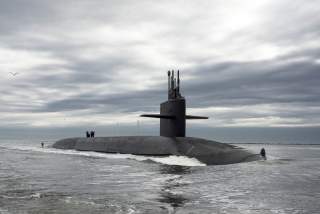Should South Korea Start Building Nuclear Submarines?
This program could allow Seoul to assume a greater responsibility for its defense.
Mitigating Risks and Leveraging Benefits
If Trump and Moon elect to move forward with U.S.-South Korean cooperation on a SSN, they must do so cautiously to mitigate the risks and leverage the benefits mentioned above. The allies must closely coordinate operational planning to maximize the added benefit of South Korean SSNs. The United States will also need assist South Korea extensively in developing the technical expertise, human capital, and doctrine necessary for the South to operate these vessels.
The allies should strengthen diplomatic coordination as well, bolstering confidence-building measures and military-to-military contacts with China and trilateral security cooperation with Japan to offset the chances of an arms race. At the same time, they should emphasize publicly that the SSN program both enhances their ability to neutralize North Korean SLBMs and signifies their determination to prevent North Korea from threatening peninsular stability and security.
The allies should also work to reduce proliferation concerns. In particular, the United States should allow South Korean to purchase U.S. enriched uranium to fuel SSNs rather than enriching its own. Furthermore, the United States must continue to work with South Korea to address the challenges of storing spent nuclear fuel. Dry cask storage technology in particular offers an alternative to reprocessing that should assuage proliferation fears.
Jihoon Yu (LCDR) is a submarine officer in the ROK Navy. He earned his PhD in Political Science at the Maxwell School of Syracuse University and MA in National Security Affairs at the U.S. Naval Postgraduate School. He can be contacted at [email protected].
Erik French is a PhD Candidate in Political Science at the Maxwell School of Syracuse University, an adjunct instructor at American University’s School of International Service, and a young leader with Pacific Forum CSIS. He can be contacted at [email protected]. Twitter: @Erik_D_French.
Image: The Ohio-class ballistic missile submarine USS Tennessee returns to Naval Submarine Base Kings Bay, Georgia in this February 6, 2013 handout photo. REUTERS/Mass Communication Specialist 1st Class James Kimber/U.S. Navy/Handout via Reuters
RECOMMENDED:

